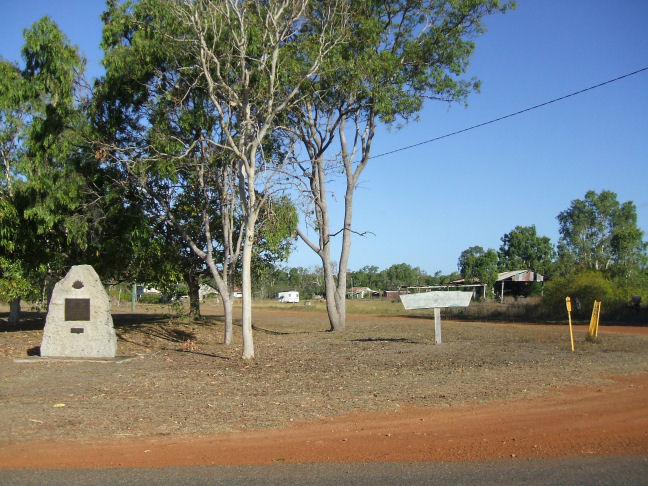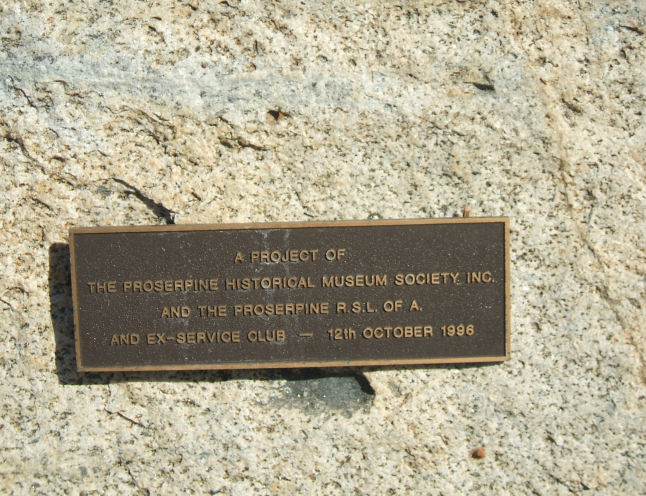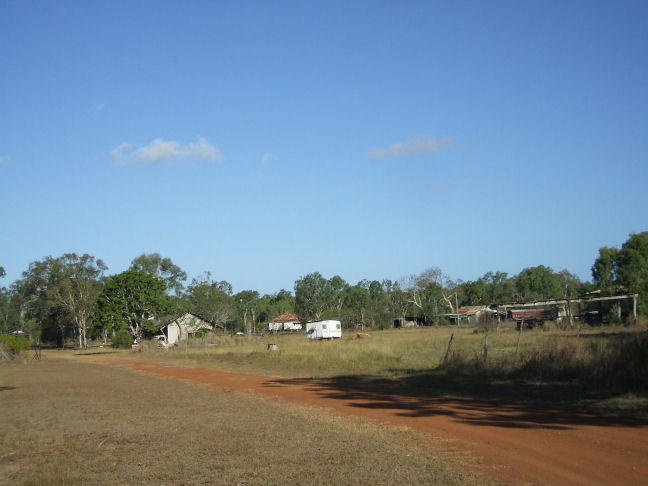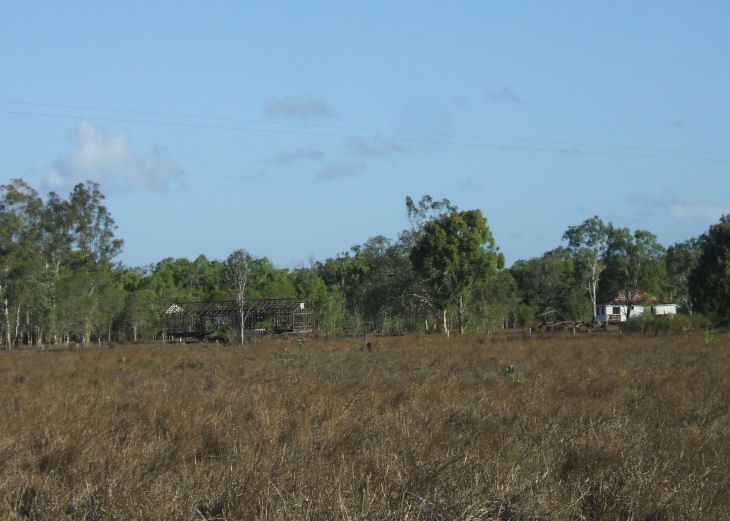AUSTRALIAN FIELD EXPERIMENTAL
STATION
GUNYARRA, PROSERPINE, QLD
DURING WWII
![]()

Aerial view of the Experimental Station at Gunyarra
Sylvia Stoltz told me that "the camp was built to accommodate up to 600 personnel which included personnel from AIF, AMF, AWAS, AAMWS, RAAF, WAAAF, UK RAMC, UK Army, Civilian scientists from Australia and UK, and visiting observers from NZ, South Africa, and USA. The camp was built after the 1943 expedition to Innisfail had satisfied the relevant authorities that research into the effectiveness of the use of mustard gas in tropical conditions should be continued. The location was chosen because land was made available by the family who held a lease on a large tract in the area. It was, in fact, rather ill-chosen as there was no rain forest in that area but apparently it met the needs of the research which continued there until the end of the war. It was custom built and included a gas chamber, a hospital and chemistsí laboratories as well as separate buildings for each of the sections involved in the research programmes."

Aerial view of the Australian Field Experimental Station (A.F.E.S.) located about 12 miles from Proserpine
The Physiology Section, including a gas chamber and a hospital, was situated on the South-East corner of the camp (top R.H. of the above photograph).
The Chemistry Section, nearby, included a laboratory for chemical analysis of mustard gas sampling from field trials.
The Defensive Munitions Sections, which tested and supplied protective clothing, was located in the same area.
In the centre of the above photograph, on the left hand side of the road, the buildings accommodated the Army administrative offices, Q-Store etc.
In the same area were two large huts accommodating the staff of the Planning & Administrative Section and the Meteorology Section.
Living quarters were situated at opposite ends of the camp. In the NE corner (top LH of photo) was the AWAS Barracks. These were spacious, consisting of one long hut divided into separate rooms for five sergeants, a self-contained flat for the AWAS officer in charge of the barracks, and a separate building for showers, laundry and latrines.
Across a road from this group were two long huts which provided dormitory accommodation for AWAS and AAMWS. Next to these were a mess hut and kitchen, with separate messes for NCOs and Other Ranks. There was also a large recreation room equipped with a piano, radio and gramophone.
Living quarters for the male personnel, including officers, was located at the SW corner of the camp.
They had the usual amenities of separate rooms for officers, an Officers Mess, a Sergeantsí Mess and a recreational hut.
Plan
of the Australian Field
Experimental Station (A.F.E.S.)
Activities at this Station continued until the end of the war. For some time it was placed in a care and maintenance situation but was finally dismantled. In 1997 the Proserpine Historical Museum Society with the Proserpine RSL Club erected a small stone memorial with plaque at the former entrance to the site.
Keith Barnes was one of the participants in the Mustard Gas Experiments carried out at AFES Proserpine. In April 2001 Keith was suffering major health problems from his part in these experiments.

Photo:- Des Wing 2 Nov 2008
Road sign marking the site of Gunyarra World War II site

Photo:- Des Wing 2 Nov 2008
Historical Memorial and old timber sign at Gunyarra

Photo:- Des Wing 2 Nov 2008
Old timber sign

Photo:- Des Wing 2 Nov 2008
Memorial stone and plaque

Photo:- Des Wing 2 Nov 2008
A Project of the Proserpine
Historical Museum Society Inc. and the
Proserpine R.S.L. of A. and Ex-Service Club - 12 November 1996

Photo:- Des Wing 2 Nov 2008
Main Plaque on the Memorial stone

Photo:- Des Wing 2 Nov 2008
Some of the remaining buildings at Gunyarra

Photo:- Des Wing 2 Nov 2008
Some more buildings at Gunyarra

Photo:- Des Wing 2 Nov 2008
The shell is all that remains of one of the WW2 buildings at Gunyarra
Sylvia Linda Stoltz, Australian Womens Army Service, VF396141
On 5 November 1943 Sylvia Stoltz was transferred from 5 AWAS Admin. Cadre to the "Australian Chemical Warfare Research & Experimental Section" and was transferred out of Vic L of C to Qld L of C. They wore LHQ color-patches.
After the first expedition to Innisfail (November 1943 to May 1944) the unit was disbanded and the AWAS and AAMWS returned to Melbourne. Most of the personnel were posted elsewhere and only the English team and two Australian civilian bio-chemists made their HQ at the Physiology Building at Melbourne University. AWAS secretaries remained with them as plans were made for a larger unit to move back to Queensland after the winter.
On 29 May 1944 Sylvia Stoltz was attached to "G" Br. Mil. Opn." Melbourne. This was probably a temporary posting whilst they were more or less "in limbo". This attachment ceased on 12 June 1944 and Sylvia's records state that she was "detached to LHQ for duty". Sylvia worked with the Head of the Meteorology Section at Melbourne University until they returned to Innisfail in November 1944.
On 30 October 1944 Sylvia was transferred to 1 Aust. Field Trials Coy., RAE. They worked at Innisfail from November 1944 until January 1945 when they moved to Proserpine and remained there until the end of the war. Sylvia's position then was as secretary to four officers in a much expanded Met. Section and she was not required to take part in field trials
REFERENCE BOOKS
Chemical
Warfare in Australia
Australia's Involvement in Chemical Warfare 1914 - 1945
By Geoff Plunkett
ACKNOWLEDGEMENTS
I'd like to thank Des Wing and Sylvia Stoltz for their assistance with this web page.
I'd also like to thank Vicky Denovan, daughter of Keith Barnes, for her assistance with this web page.
Can anyone help me with more information?
"Australia @ War" WWII Research Products
|
© Peter Dunn 2015 |
Please
e-mail me |
This page first produced 10 November 2008
This page last updated 25 January 2020